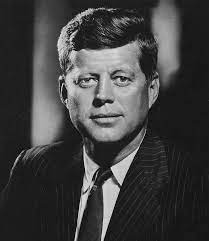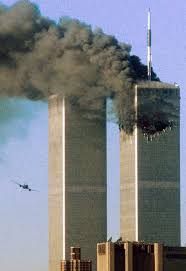

The assassinations of the 1960s and the tragic events of 2001 have resisted resolution for many years. Now young Americans have an opportunity to contribute to solving them. Steven J. Dillon and Kenneth J. Dillon of Scientia Press suggest why the investigations have not borne fruit, how we can reach more clarity, and what special strengths young Americans can bring to the effort to get to the bottom of them. See also https://www.scientiapress.com/kgb-theory, https://www.scientiapress.com/jdey-anthrax-mailings, and www.scientiapress.com/al-qaeda-shoebomber-flight-587.
Young Americans Can Help Resolve Our Historical Tragedies
Steven J. Dillon and Kenneth J. Dillon, June 12, 2025
Both the assassinations of the 1960s–John F. Kennedy, Martin Luther King, and Robert F. Kennedy–and the tragic events of 2001 changed the course of the country yet left more questions than answers. Older generations of Americans have extensively researched and debated theories of these events but have failed to converge on solutions even as their views have hardened. For 2001, they don’t even agree on which events should be included. Now, however, young Americans, many of whom were not even alive in 2001, have an opportunity and a duty to investigate these events and uncover truths that have been hidden but not necessarily lost.
Investigations into the assassinations of the 1960s reveal several clues, ignored at the time, of some foreign involvement. President Lyndon Baines Johnson (1963-69} was clearly eager to rule out conspiracies and blame a “lone gunman”. Understandably, he feared that evidence of Soviet involvement in the JFK assassination could provoke Americans to demand retaliation, and that could lead to nuclear war. So he clamped down on any hint of conspiracy. In turn, this gave the Soviets the opportunity to blame the CIA and eventually to carry out further assassinations without much fear of an official response.
Today, we have the advantage of not being as affected by the geopolitics of that era, which allows us to see more clearly. There is also much more information, whether in declassified documents, in those soon to be declassified, or in publications by independent researchers who at times manage to make their theories more complete and hence more credible than official explanations. Meanwhile, chances are that in some or all of these cases, someone already has the correct solution. So we need to investigate the work of various authors or theorists to understand the facts more fully. Unfortunately, many of the actors in these dramas died many years ago, which means that there is no longer any way to obtain information from them personally. That said, there is a clear pattern in the assassinations of JFK, MLK, and RFK of having an intricate plan involving spinning a web around a patsy, damaging American society, and pointing speculation toward the FBI and CIA.
The Events of 2001
With the events of 2001 such as the 9/11 attacks, the anthrax mailings, and the crash of Flight #587 on November 12, 2001 (caused by a shoe bomb?), more of the prominent players in these affairs are still alive. A credible investigator could obtain relevant information from some of them, much like Philip Melanson with his investigation of MLK’s death. Yet as a society we are more affected by the political divisions produced by or related to these events. Furthermore, certain wild theories born out of these catastrophic events have alienated many people who would otherwise seek to investigate the events further, lending credibility to the official US Government narrative.
A good starting point for renewed investigation of 2001 might be the anthrax mailings. It remains controversial because of the circumstantial nature of the evidence against the alleged mailer, Bruce Ivins. An attempt to connect the September 11 attacks, the anthrax mailings, and the putative shoe bomber attack on Flight #587 might also prove illuminating. It should be noted that, although more government information can be requested under the Freedom of Information Act, such requests are easy to thwart and have yielded few results. It might be more effective to persuade a member of Congress to solicit documents such as the 16 pages on alleged Mailer Bruce Ivins in the Interim Major Case Summary.
How Young Americans Can Contribute
There are also some suspicious deaths of other prominent figures in American society in the second half of the 20th century: those of actress Marilyn Monroe, hypnotist William Bryan MD, speculated to have been linked to the assassination of RFK, journalist Dorothy Kilgallen, and former CIA Director William Colby. Young Americans can access more information about all of them than their predecessors, study the theoretical advances that have accumulated in recent decades, and use their well honed disinformation-detection skills to evaluate existing theories, since, as noted above, correct explanations might already exist. Their fresh perspectives and (we can hope) open minds focused on achieving social justice can help them recognize the roles of the media, the American government, and foreign actors in the historical dramas that continue to affect us today, while also potentially exculpating wrongly-blamed people and organizations.
Searching for underlying patterns, we must study all possible related cases and their similarities, with an eye to discovering a modus operandi that points to one perpetrator above all others. We need to avoid misleading debates, such as “Suicide vs Murder”, since there are many murders in which the perpetrators go to great lengths to make them appear to be suicides, while the opposite is highly unlikely in the case of a real suicide. A helpful step is to draw up a shortlist of two or three main suspects, keeping in mind that our great adversary the KGB was a particularly bloodthirsty organization. Likewise, for the 2001 events, al Qaeda should be on the shortlist. Once all sources of information have been investigated, one can aim provisionally to identify a leading suspect. Even if definitive proof of guilt may never be obtained, having a leading suspect advances the investigation and can help achieve some kind of success, e.g., by exonerating the innocent. The most important thing is to challenge dubious or palpably wrong official versions of what happened in the 1960s assassinations and the 2001 attacks, knowing that there remain many doubts around what actually happened, since governments, organizations, and individuals had ulterior motives for promoting their narratives about the cataclysmic events that have shaped modern history.
One ironic outcome of perhaps finding the truth: it can prove that the US Government was lying to the people and so not to be trusted! A sad conclusion, but a useful one. One could then argue that, for instance, LBJ had an understandable and in a sense forgivable reason for suppressing the Soviet role in the JFK assassination, so there was no malign deep government conspiracy against JFK. He was protecting the public against the danger of war. But we should not so readily assume in the future that lone gunmen are behind every assassination. A very helpful finding.
